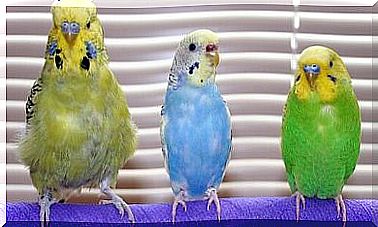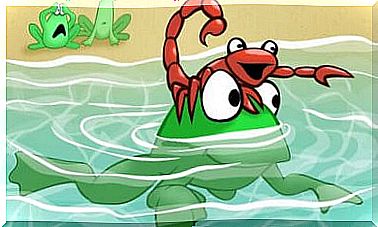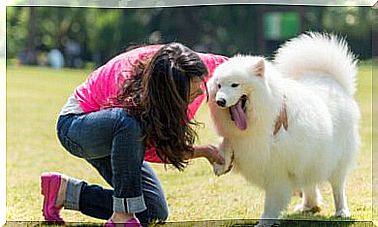Origins And Evolution Of The Turtle, A Unique Animal
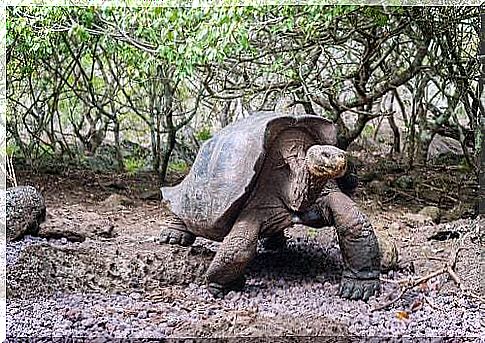
The turtle is one of the most interesting reptiles to discover in nature. Although its behavior conveys a lot of calm and tranquility, even a little monotony, the truth is that the origins and evolution of the turtle are not at all ordinary, quite the contrary.
In this article we will analyze the surprising changes that the turtle has undergone over the centuries, since it has inhabited our planet.
Origin of the first reptiles on our planet
The reptile family includes some of the oldest surviving species on planet Earth. Among them, there is a very particular type of turtle native to the American continent, popularly known as the “caiman turtle”.
The so-called “first reptiles” emerged at the beginning of the Carboniferous period, about 300 million years ago. According to most zoologists, this ancient family of animals called Captorhinidae are the ancestors of the reptiles we know today.
The captorinids had a body similar to small lizards. However, they show significant changes when compared with the labyrinthodont amphibians from which they evolved, especially with regard to the proportions and characteristics of the skull.
The skulls of these “early reptiles” showed a bony covering in the cheekbone area. For this reason they are considered anapsid animals.
The origin of the turtle: evolution from anapsids
The evolution of the turtle is unique, even within the evolutionary history of reptiles. Its evolution from anapsids has seen changes never seen before, which cannot be observed in the evolutionary process of other reptile species.
One of the great curiosities about the turtle’s history is that, contrary to what one might believe, it was originally a terrestrial animal. The evolutionary history of reptiles indicates that it took about 100 million years for some tortoises to evolve to adapt to the aquatic environment.
The first specimen of turtle: the beginning of evolution
The first animal directly related to the turtle is the eunotosaurus. It is an extinct reptile, the first to develop the enlargement of the ribs, essential for the breathing and ventilation process of the animal’s body.
But only after the appearance of the Pappochelys was it possible to observe a structure similar to the shell of today’s turtles. This primitive structure was called gastralia and its main function was to protect the vital organs of the specimen.
Therefore, the evolution of the turtle followed a double adaptive process. Starting, like all reptiles, from amphibians, to then undergo new morphological and behavioral changes, up to returning to live underwater.
The first tortoises that inhabited our planet
The first representative of the Testudines of which we have testimony is called odontochelide (scientific name Odontochelys) . This species emerged in South Asia during the Triassic period, about 220 million years ago. It was an aquatic animal whose plastron – the lower part of the shell – was already well formed; his back, on the other hand, still showed some primitive features.
About 10 million years later, also during the Triassic, the second tortoise in history appeared, known as Proganochelys , which lived in Eurasia. Although it was also a primitive species, its shell already resembled that of today’s turtles.
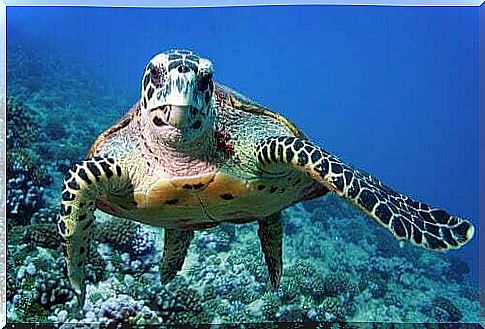
The neck and limbs of the Proganochelys were not yet retractable, but covered with spines. In addition, this turtle species had teeth on the palate. Scientists are convinced that the turtle is one of the oldest reptiles in the world, which existed even before snakes and lizards.
The controversial classification of turtles
Taxonomy may seem like a very exact science to those not directly involved in its study. However, the classification of turtles has sparked strong debates which, to date, have not found a consensus in the scientific community.
For many years, herpetologists seemed to agree that these reptiles belonged to the anapsids. But in 2011, biologist Gabe S. Bever carried out a detailed study on the skull of a primitive turtle ( Eunotosaurus africanus ). The results of this analysis suggest that the turtle actually belongs to the diapsid subfamily.
The evolution and origins of the turtle still conceal many mysteries, which we hope to unravel with the advancement of science and technology.


